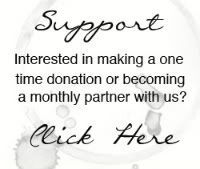a fish in a story about an ocean.
Over two months spent in South Africa and nearly reaching that date that used to seem far off which has snuck up and become “3 more weeks”. Three more weeks until I drive to the airport, stand in lines, move through security with hundreds of others in the quiet chaos of removing our shoes, belts, coats, scarves, convince guards we aren’t smuggling bombs, wait to board, wait for takeoff and then stare out a tiny window as if to say goodbye to yet another place I’ve fallen in love with. About the time the stewardess rolls down the aisle with the drink cart I’ll have entered into reflection about what was just happened in my life and I will probably take out my journal and begin writing frantically, trying to capture what I am feeling right then and there, wondering as I write if I’ve done any good and why I can’t be everywhere in the world all at once. Then a steady, holy whisper will interrupt my thoughts and remind me that there is a bigger story that I am a part of and that whatever experience I have just had is a fish in a story about an ocean. I will order a cranberry juice and try to convince Steve to order a ginger ale and propose that we share our drinks, combine them and make spritzers. He will probably agree and as we concoct delicious fizzy goodness I will look at him and know that the gears in his head are turning and that the same tension that is escalating in my heart is shared in his. He will take my hand and we’ll recline our seat backs a little bit, breath deeply and silently prepare our hearts for the next part of the journey.
By that point I’ll probably have closed my eyes, put my head back against the pillows I’ve collected from the empty seats around me and be on to thinking about how romantic Africa is; it’s tall mountains named after the wild game that roam it’s valleys, the breathtaking pinks, purples and reds in its skies at dusk, the energy you feel as you pass by a group of men singing and dancing on the sidewalk or the respect you feel when you see a woman balancing groceries on her head, a baby strapped to her back, knowing she has probably walked for miles and she probably has miles more to go. Yes, there is an inexplicable vibrance here that seems to be encouraged by the steady sound of tides rolling in from the Indian and the Atlantic as if to say over and over “life is here, hope is here.” I don’t think I am the only one who romanticizes Africa. If you live in the west it is generally portrayed as a place where HIV and AIDS victims suffer hopelessly, where swollen bellied babies with big, sad eyes stand in line for rations at feeding schemes, infomercials about why we should donate 25 cents a day for eighteen months so that a family can have clean water and an excuse for why American kids have to finish their dinner.
Ironically I’ll finish the last part of that thought just in time to refuse a scary meal in a tin tray. Steve will dig in, tell me it’s not as bad as it looks and put all of the tomatoes from his mini-side-salad in his empty coffee cup and hand them to me. Such a thoughtful husband. I’ll eat my lycopene and my mind will go back to Africa. It’s not to say that the generalizations about Africa aren’t true, yes, your 25 cents a day will probably change someone’s life forever. But the thoughts that will be swirling in my brain will be of a life I don’t quite understand. About why I was born in a place where most of the swollen bellies are caused by overabundance and not malnutrition. About if I am convincing myself that I am actually doing some good in the world. I’ll search my brain and try to get to the core of what is causing the pangs in my chest. I’ll take out my headphones and listen to some music to slow my heart down. I’ll fall asleep and wake up 11 songs later. I’ll know that the generalizations about Africa only become scary and wrong when we begin to think in the context of ourselves as the fixers of the world and the hungry people with the dark sad eyes as the ones who need to be fixed. When we take on the humble mindset of servants to all, we realize that there are infinite connections between me and you and the kids whose faces flash for 30 seconds on the screens in our living rooms. I need to be redeemed just as much as him, her and you. I’ll take out my journal again and my favorite black pen but this time I won’t write frantically. I will write a three word prayer, “peace.be.still”. I will exhale deeply and open my window to realize I am flying high above the clouds.








